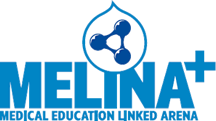Couples, married or not, partners are the cards that frequently, if not by definition, lean on each other beyond the pale, to the n-th degree. Witness so many lessons of what love really is.
They bend and flex. Tested by history, timelines entwined, ties-that-bind, trying to persist in the hear and how.
Their psychological union is challenged as memories become eroded and physically frailty takes hold. Usually; mostly, on the one.
Eventually things, established relationships break and one or the other - should we say:
finds themselves in - residential care.
Courtship enables us to become socialised to and with each other and respective families and in some instances other cultures and beliefs.
In this crucial transition sometimes there is learning through experience as respite care is sought.
In other cases health services wonder how this relationship has survived for so long. A crisis is a precipice for change. A chaotic invitation. Radical.
A sudden shift from what was home to a new world of corridors, r, ro, roo, room, rooms; my room? New noises and smells and altered routines and jumbled faces, touches, days and nights
The dolls of childhood are left behind, but may be picked up again literally as an emotional comforter. If not this then perhaps a ‘paper clad dol’ that is bound to be - ‘deprivation of liberty’.
In this new home, this person walks the corridor and inspects the minutia of the doors and windows. Staff pass by(e) waving by their walk - "so-busy-look-no-hands" while trying to be butterflies.
Butterflies that cannot say which way is ‘out’.
They are they. Difficult to follow with eye, head and a hand to catch. The individual recognises the whole of the comings and goings, the main thoroughfare. The strategic point,
the nexus of comings and goings.
Something's not right though! I need to be somewhere else.Sadly (or Usually), there is no going back.
Is there a pattern to this confused-coming-to-terms-with?
From asking repeatedly about being elsewhere, especially with the setting of the sun is there a shift in attempted reasoning? So correct, so responsible all those decades ago. Perhaps even months ago...
If no one will listen to me then perhaps if I have my wife/husband with me then they will see the importance of my cause, my mission.See look - I have my wife, husband, partner with me now: we really need to go! Can the residential care home support this person? Can they meet their care needs? They say they are ‘struggling’. Will they need to move – again?
How do they work through this transition? What do we know of how individuals negotiate this transition in their lives? How can we try to understand?
How do they make sense of what has happened, and where they now find themselves? Will their level of distress, agitation gradually extinguish as with their efforts to leave?
As they look to the windows, seek to traverse the doorway, cross the foreign threshold and venture to that somewhere that is not here, we know one thing.
Person centredness lies in the minutia of the life once lived through those locked doors and windows.
We can ‘open’ the doors and windows by travelling with them, together, sharing that journey, the sense of those times and upon returning help them adjust to this new listen and how. Clearly, deprivation of liberty is not a punishment here, yet it demands compensation by provision of high quality personalised care.




